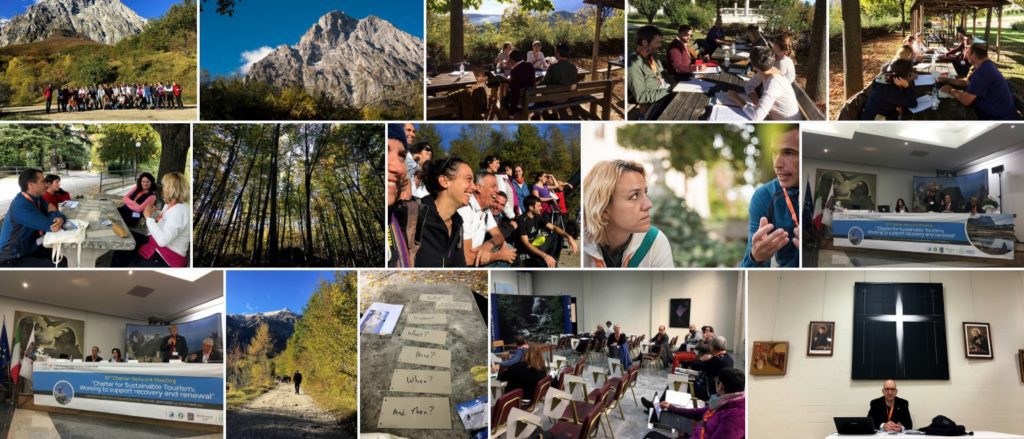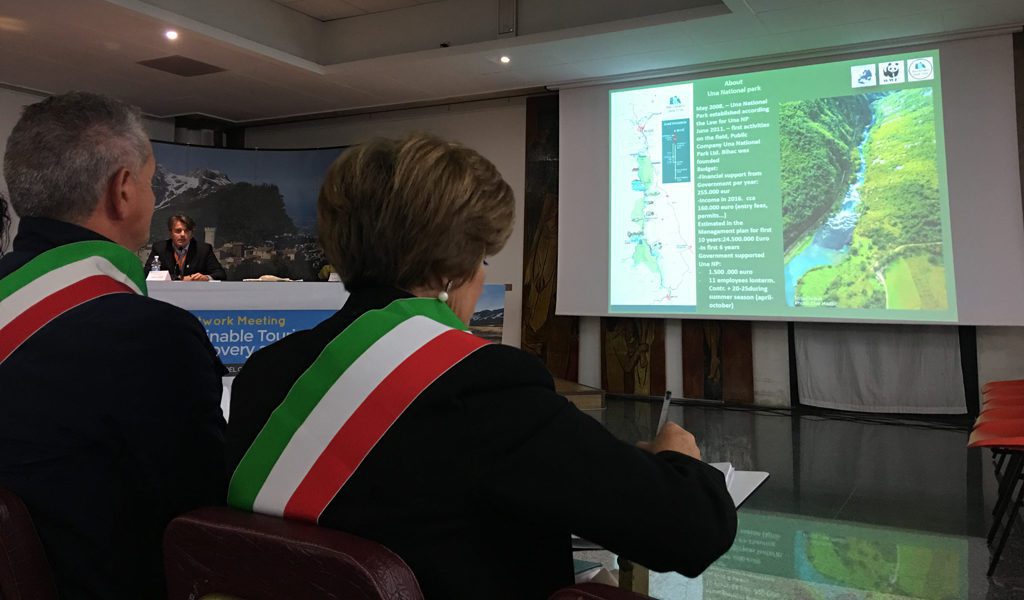Financing Natura 2000 – Guidance Handbook for EU funding opportunities in 2014-2020
Financing Natura 2000 handbook
The Guidance Handbook was written to give actors who are directly involved or linked with Natura 2000 sites an overview of the applicable EU funding opportunities currently available.
Whom is it for?
Primarily the information addresses local and regional authorities responsible for financing Natura 2000 sites, but beyond it gives some creative input on how other stakeholders related to Natura 2000 (e.g. landowners, farmers, fishermen, public administrations, NGOs, SMEs, research bodies, educational bodies, etc.) can make use of EU funding opportunities as well.
To give you an idea – the Handbook aims to:
- Guide regional and national level authorities in planning the use of EU funds.
- Provide references for Natura 2000 management plan development and for future review of national and regional programmes.
- Support the operational level in understanding the different fund-specific regulations and gives practical tips for better integration of Natura 2000 in Operational Programmes (OPs)
- Facilitate achievement and maintenance of consistency between Prioritised Action Frameworks (PAFs) and the national and regional Operational Programmes (OPs).
- Simplify the identification of synergy potentials between the individual EU funds and helps avoiding duplication and overlaps.
- Inspire win-win ideas by showcasing how financing Natura 2000 can be linked to the funding of larger regional projects and that way contributes to broader socio-economic benefits.
- Highlight how non-EU funding and EU co-funding can be combined to ensure the full Natura 2000 network can be financially supported. (As the EU budget is reduced and the competition has increased.)
Which funds are covered?
The main focus of the Handbook are EU funds managed at national and regional level – the financial instruments analysed in detail are:
- Programme for the Environment and Climate Action (LIFE)
- European Agricultural Fund for Rural Development (EAFRD)
- European Maritime and Fisheries Fund (EMFF)
- European Regional Development Fund (ERDF)
- European Social Fund (ESF)
- Framework Programme for Research and Innovation (Horizon 2020)
As the Handbook provides valuable input for a broad range of stakeholders make sure you have a glimpse at it – you might find some opportunities and get new ideas for funding your projects. A full pdf version of the Guidance Handbook is available to you for download and consists of:
Part I: Funding opportunities in 2014-2020
Part II: Analysis of Natura 2000 management measures eligible for financing in 2014-2020
(The handbook was prepared by WWF, IEEP, ICF GHK and commissioned by European Commission DG Environment in June 2014)
Webinar: Transboundary Cooperation for nature and local communities
Photo: German-Dutch Nature Park Maas-Schwalm-Nette (DE-NL)
20th November 2017, 15:00 CET (Central Europe Time)
Europe is a complex continent with thousands of years of human interaction overlaying the natural world. The most obvious manifestations of that history are the many political borders that abound, and indeed change over time.
Nature, however, knows no boundaries. Across Europe, borders create artificial barriers to the management of valuable natural resources. Where Protected Areas share a common political boundary, cooperative management is fundamental if we want a stronger and natural Europe, with positive relations among countries within and outside the EU.
With this webinar, we will be looking at two examples of strong collaboration between 2 Transboundary Regions. How are they facing management challenges? How to actively involve local communities and authorities? Parks will share their daily experience working in a transboundary region, and showcase how cooperation benefits nature, cultural diversity, and the local economy.
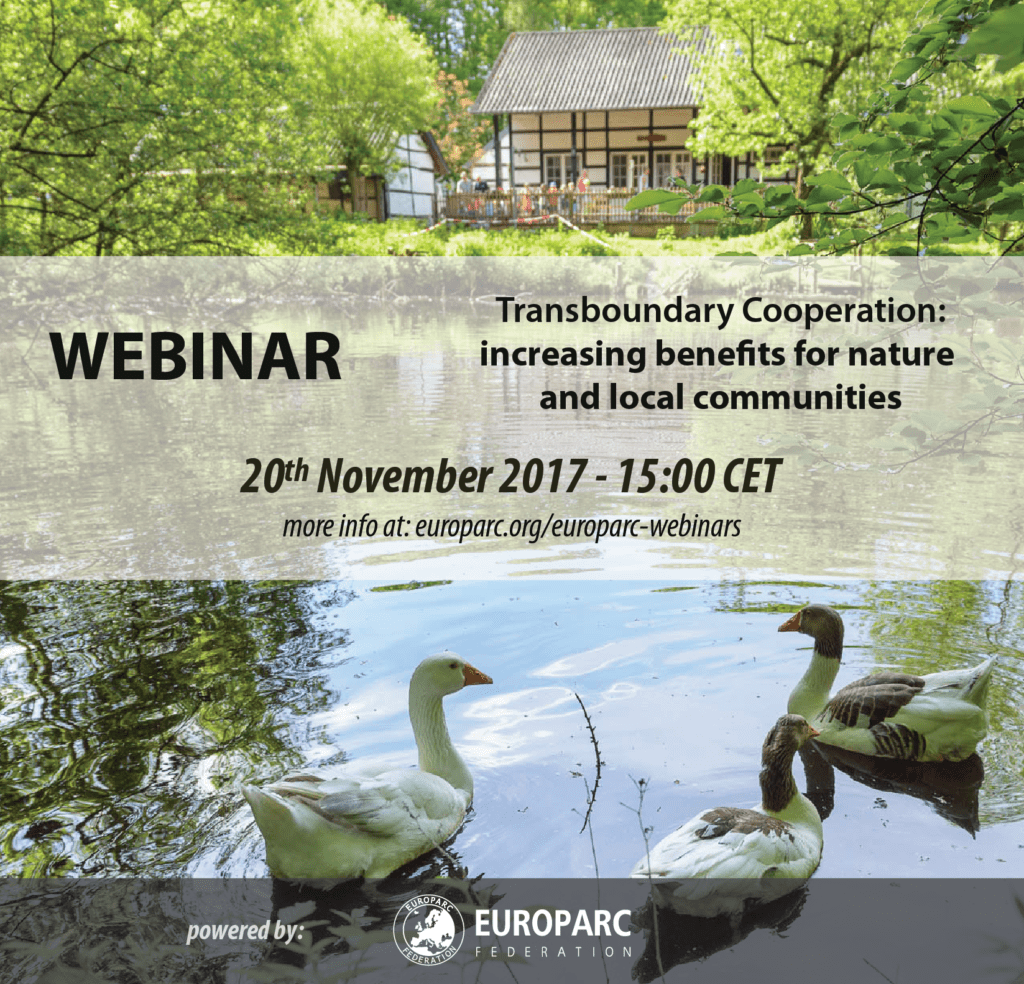
Photo from the German-Dutch Nature Park Maas-Schwalm-Nette
Transboundary Parks: benefiting nature and local communities
The first case illustrates a trilateral cooperation between Finland, Norway and Russia, the Pasvik-Inari Trilateral Park. “Borders separate – Nature unites!” is the motto of this complex cooperation, that crosses the European Union borders. How to work collaboratively in a region encompassing five protected areas, and cultural diverse? What are the lessons learned?
The second case study reflects the importance of involving local communities by the German-Dutch Nature Park Maas-Schwalm-Nette. German and Dutch staff work everyday shoulder-by-shoulder, sharing office, projects and activities. We will hear about the creation of the Park, and how they are actively involving local communities, public authorities and volunteers in their activities.
The Webinar will be introduced by Stefania Petrosillo, policy officer at EUROPARC and responsible for the Transboundary Parks Programme.
Case Study 1
Together to protect the old taiga forest and promote dialogue, common understanding, and collaboration at the European Union borders’
by Riina Trevo, Specialist, Finnish representative in the working group of Pasvik-Inari Trilateral Park (FI-NO-RU)
Trilateral cooperation between Russia, Finland and Norway is about nature protection, management, environmental awareness, and promotion of sustainable nature-based tourism in the Pasvik-Inari region. Identified best practices are the solid bases for the cooperation. Five nature protection areas constitute the Pasvik-Inari Trilateral Park.

Pasvik-Inari Trilateral Park – left: Fishermen, Pasvik Zapovednik, Rajakoski nature school – right: Fugleregistrering i Pasvikelva, by Björn Frantzen – Bioforsk
About the Transboundary Area
Pasvik-Inari – a meeting point. Borders separate – Nature unites!
Pasvik-Inari Trilateral Park entity was established in 2008 as a result of long-term cooperation between the nature protection authorities in Norway, Russia and Finland dating back to early 1990’s. The Trilateral Park consists of five nature protection areas; three areas in Norway, one in Russia and one in Finland. The total area of Pasvik-Inari Trilateral Park is 1889 km2.
The lush valley of the Pasvik river stretches from Lake Inari in the south towards the Barents Sea in the north, appearing as a vital nerve in the mosaic landscape of small lakes, mires and wet lands and virgin Taiga forests. The region comprises a unique nature system where European, Eastern and Arctic species meet. Here, some of the species reach the ultimate limits of their distribution. The area is also an important nesting and resting place for a large number of migratory birds.
The Pasvik-Inari region is a meeting point for different cultures too. Different Sámi people live in the area: the Northern, Inari and Skolt Sámi. Since the Early Middle Ages, Finns, Norwegians and Russians have also settled in the region. Borders separate – Nature unites!
Although different cultures coexist in the area and have learned a lot from each other, they have each retained their distinctive traditions.
Case Study 2
Cultural and socio-economic benefits for cross-border communities, involving private and public stakeholders in common projects
by Silke Weich, Cross-border project manager, Nature park Maas-Schwalm-Nette (DE-NL)
Important in the transborder cooperation within the German-Dutch nature park Maas-Schwalm-Nette is the commitment of stakeholders on both sides of the border for common ideas and projects. This contains mutual understanding of cultural differences, appreciation of each other’s strengths and respecting each other’s weaknesses.
Successful projects will leave partners and stakeholders satisfied with the benefits of a project and with the intercultural relationships that have been raised favourably in a long-term scale. Therefore, not only the cooperation of the project partners needs to be supported but also society has to be involved in project actions.

Maas-Schwalm-Nette Nature Park – left: Theater in the Park, by A.Raedts ; right: Visitor Center, by M. Hectors
About the Transboundary Area
3 rivers, 2 countries, 1 office: the Transboundary Park whose managers work shoulder-by-shoulder
The Nature Park Maas-Schwalm-Nette is located on the border of the German federal state North Rhine-Westphalia and the Dutch province Limburg. Within 800 km2 rivers, forests, heathland, bogs and varied cultural landscapes make it a very special attraction. In the heart of the park lie 10.000 ha of forests and nature reserves of European importance (NATURA 2000).
After in 1965, the German Nature park Schwalm-Nette had been founded as an association of three districts in Germany, representing 17 communities, in 1976 the Nature park was enlarged to the German-Dutch Nature park Maas-Schwalm-Nette on behalf of a treaty between the Kingdom of the Netherlands and the state Northrhine-Westfalia. In 2002 the transborder association German-Dutch Nature park Maas-S(ch)walm-Nette was founded with a transborder project office including Dutch and German staff to manage bilateral activities and projects.
The EUROPARC Transboundary Parks Programme and Certificate “Following Nature’s Design” seeks to support protected areas in a process of mutual understanding, often between countries where history may have created mutual distrust, or administrative barriers and develop management tools to enable greater cooperative management.

23 European Protected Areas have been successfully certified as 10 Transboundary Parks ’’Following Nature’s design”.
- Get to know the Programme , discover the network and find out about our transparcnet meetings
Event organised by

How to join?
Register here
Previous Webinars
21 Sustainable Destinations will be awarded!
Photo: Terras do Priolo, Azores, Portugal
On the 7th December, EUROPARC Federation will be celebrating success at the European Parliament with the 21 Sustainable Destinations that will be awarded the European Charter for Sustainable Tourism in Protected Areas. Every year, the Charter Award Ceremony is an opportunity to look at the benefits that sustainable tourism strategies provide for people, environment and local economy within protected areas.
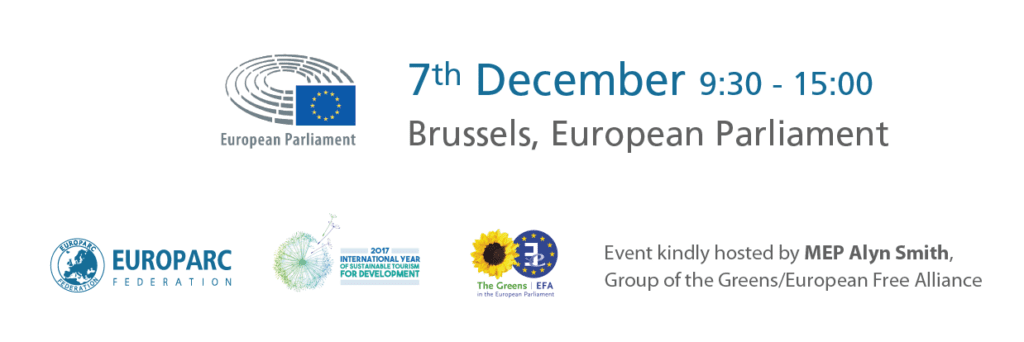
The Charter Award Ceremony 2017 is kindly hosted by the Member of the European Parliament (MEP) Alyn Smith, from the Group of the Greens/European Free Alliance. We will once more raise the voice of Protected Areas at the highest European institutional level, with the opportunity to share good practices and case studies from the ground.
Members of the European Parliament, representatives of the European Commission and Members of the Committee of the Regions will contribute to the debate, providing the EU perspective, with highlights on recent policy developments and upcoming priorities.
- Download the final programme
- Register here (participation is free but registration is mandatory)
New 7 Sustainable Destinations
From the 21 Charter areas that will be awarded, 7 have just started their path towards becoming a Sustainable Destination. For the first time, 1 Park in Sweden will be awarded, expanding the Charter Network to 20 countries!
Italy
AMP Penisola del Sinis – Isola di Mal di Ventre
Parco Nazionale del Gran Sasso e Monti della Laga
Parco Nazionale dell`Aspromonte
Spain
Parcs del Garraf, d’Olèrdola i del Foix
Sweden
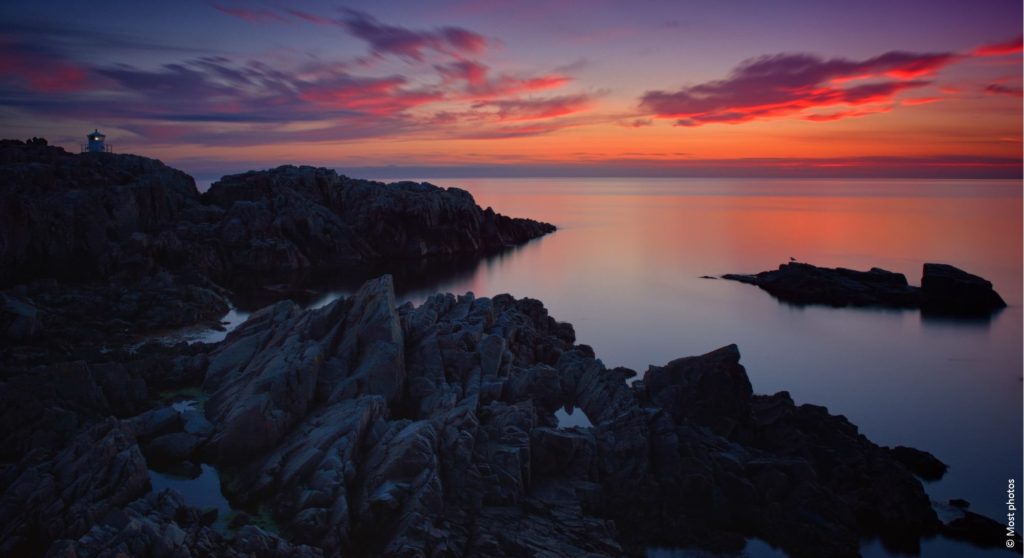
Kullaberg Nature Reserve, Sweden
14 Sustainable Destinations re-awarded
For the first time in the history of EUROPARC, the number of Parks re-awarded will be higher than the Sustainable Destinations joining the Network. This number highly reflects the commitment of Parks in working with their local stakeholders, under the standards of the ECSTPA. Several of these Parks are also implementing Charter Part II and Charter Part III, necessary steps for those willing to achieve a higher quality tourism experience, for people and nature alike.
Finland
France
Parc naturel régional du Verdon
Parc naturel régional de Camargue
Parc naturel régional du Haut-Languedoc
Parc naturel régional du Queyras
Parc naturel régional du Vexin français
France and Italy
Parco naturale Alpi Marittime and Parc National du Mercantour
Italy
Latvia
Portugal
Terras do Priolo – Life Project and Environmental Center
Spain
Parc Natural del Delta de l`Ebre
Parque Regional de Sierra Espuña
United Kingdom
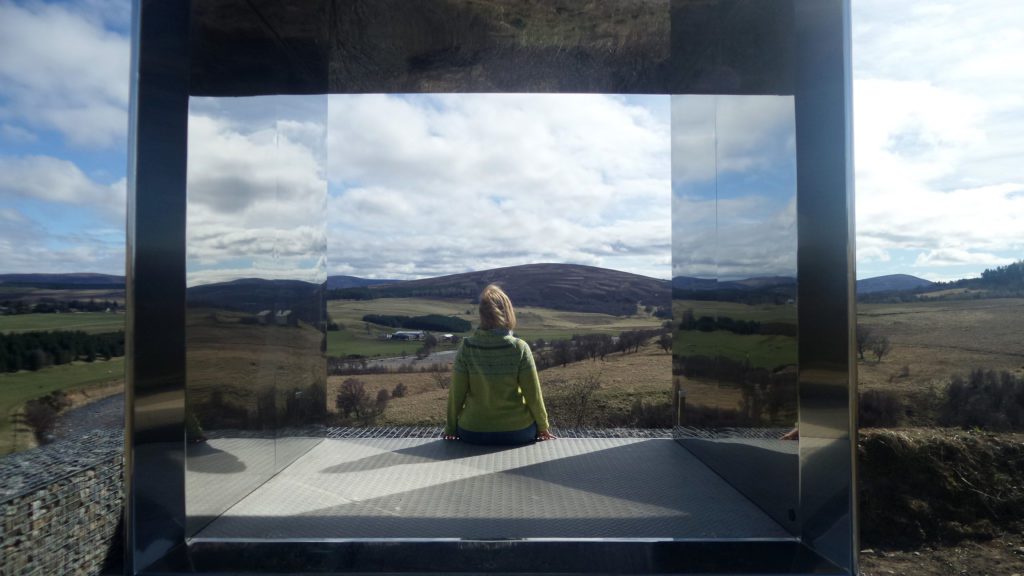
‘Still’ Cairngorms Snow Roads Scenic Route
X Charter Network Meeting 2017
X Charter Network Meeting, Isola del Gran Sasso d'Italia, Italy, 2017
Every two years, the network of Sustainable Destinations awarded with the European Charter for Sustainable Tourism in Protected Areas (ECSTPA), comes together for experience exchange.
The 10th edition of the Charter Network Meeting took place in Gran Sasso e Monti della Laga National Park, Italy, gathering 80 participants from 13 nationalities. The 3-day event included a plenary session and 5 practical workshops, where participants learned from their European peers, and draw the future developments of the Charter.
The historical moment of the Meeting was the announcement of the life and new face of the ECSTPA. A new facebook group was also created during the meeting, it aims at better connecting members of the network, and it’s open to all parks and partners working together for Sustainable Tourism. You can join the group here. The last day was of green inspiration, with a guided tour through the Park. The Meeting was organised by EUROPARC and Federparchi, EUROPARC’s Italian Section.
Watch the film
Check the photo album
Working to Support Recovery and Renewal
Following the United Nations International Year of Sustainable Tourism for Development, the meeting focused on the Charter as a tool to support recovery and renewal, specially relevant for this Italian region, one of the many affected by last years’ earthquakes. These severe episodes occurred frequently in the history of Italy. In 1976, the region of Friuli Venezia Giulia in northeastern Italy was ravaged by strong earthquakes. “Forty-three thousand buildings—out of more than 70,000 inspected—were declared unusable, and thousands more were completely destroyed”.
40 years later, we looked at the development of Venzone (one of the municipalities affected) as a successful example of how recovery can strengthen touristic and cultural activities. In 2017, Venzone was awarded one the “Borghi d’Italia“, national contest to praise the authentic and picturesque villages of Italy. Fabio de Bernardo, Mayor of Venzone, shared his experience in reconstructing the village over the last decades, and how they have been partnering with Prealpi Giulie Nature Park. The Park, together with Triglav National Park (Slovenia), was awarded the Charter last year, becoming the first Transboundary Charter Area. Download the Presentation
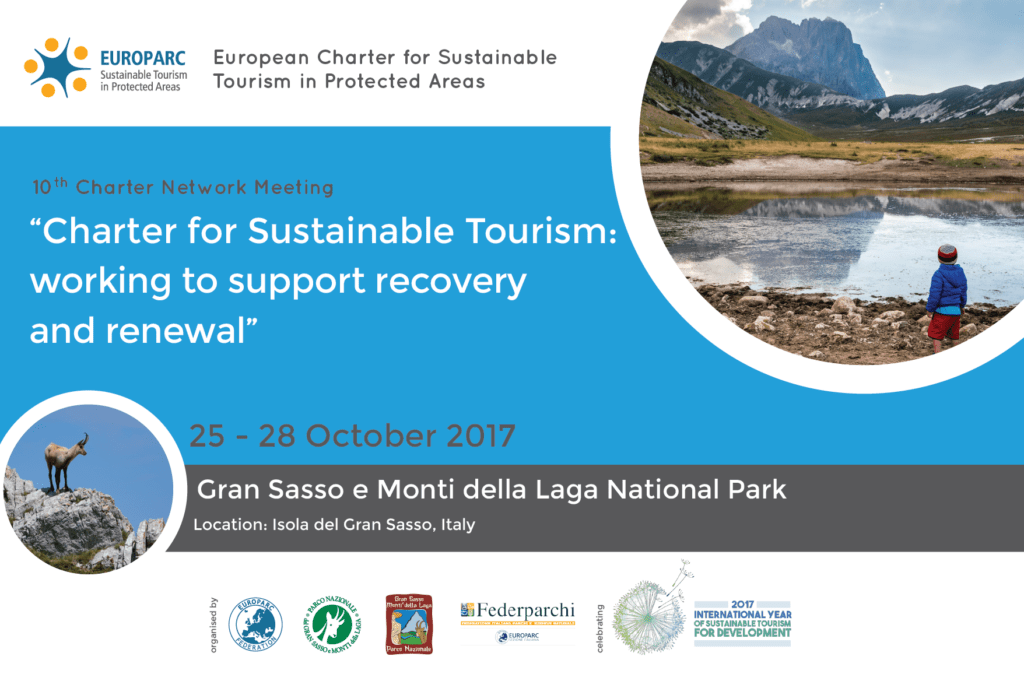
During the plenary session, representatives from the local and regional governments shared their commitment towards strengthening the region through a sustainable tourism approach. Local business inhabitants and business owners also joined the Plenary and shared their needs and hopes for the future of the region. Several local projects for touristic promotion and integration of war refugees in the region were proudly presented by local NGOs.
From Italy to Bosnia and Herzegovina
Haris Hadžihajdarević, Director of Una National Park, showcased how they are generating social and economic benefits in cooperation with the local community. Despite the economic and social situation in Bosnia for the past 20 years, and the low financial support that the Park receives, their model of cooperation has highly benefited nature and people. With the framework of the Charter, they have strengthened relations with local stakeholders and created connections with all those involved in tourism within PA and the wider area.
Workshops: outcomes and presentation
Share ideas and find solutions is one of the main objectives of the Charter Network Meeting. We do it through around the table, in thematic workshops. Below you will find a brief summary of each workshop and the presentations.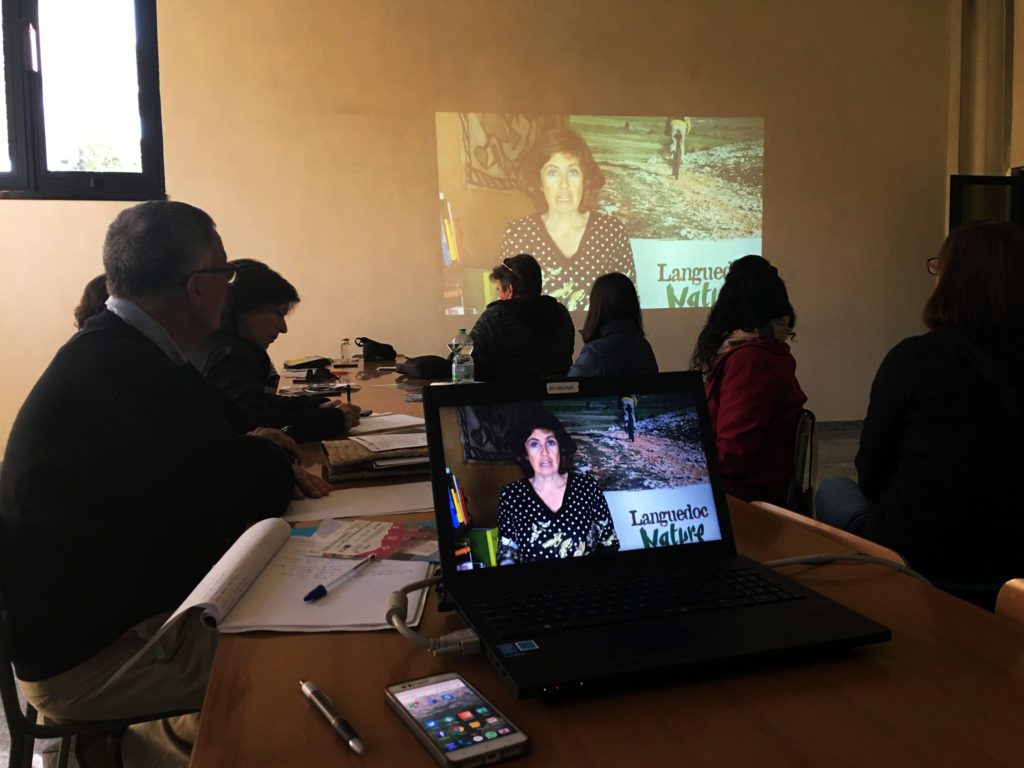
Workshop 1 – Between Communication and Promotion: Give Voice to Sustainable Destinations.
During the workshop on Communications, participants discussed best practices implemented in parks and worked (hard) on the future marketing and communications plan of the Charter. Lessons learned:
- engagement and cooperation with local stakeholders improve performance, benefiting parks, people and society
- Stakeholder forum meetings can be used as “educational thematic workshops”, organised several times per year with small group of stakeholders with similar interests
- The network of sustainable destinations needs to be proactive in finding and sharing information: a new Facebook group was created!
Outcomes Workshop 1 Communication in Medvenica Nature Park (Croatia)
Workshop 2 – The revival of a territory: tourism between opportunities and challenges for sustainable development
The workshop focused in the Italian context of Parks working with the Charter, especially in the Apennines situation. The main outcome of the workshop was the “Letter for Renewal and Revival“, available in English and Italian.
- Great desire of the territories to continue to maintain a social and economic vital fabric
- Notable testimonies of solidarity by other parks and institutions in Europe (eg French Regional Parks)
- Benefit from experiences in other contexts that have experienced similar experiences (eg Venzone)
- Need to activate collaborations and promote associations among similar subjects (parks, operators, municipalities etc)
- Need to promote all categories of local subjects (from small to consortia)
- ECSTPA can represent an effective (container) container to help achieve revival goals
Workshop 3 – Building partnerships between local businesses and travel agencies
Workshop 3 brought successes achieved by parks implementing Charter Part II – Sustainable Partners and Charter Part III – Sustainable Tour Operators, and stimulated participants to look at the challenges ahead, the needs of partners and what can be done to achieve the objectives of sustainable tourism.
Lessons learned
- There are already more than 600 charter partner businesses in 40 Charter Parks, in 4 countries. But we still need to enhance implementation of Charter Part II and III (160 charter parks, 20 countries).
- Charter Part II is a flexible methodology. There is a need of knowledge and experiences exchange.
- Measure the benefits of the implementation of the Charter Part II for nature conservation, reducing environmental impact, business performance and local development. Common methodology, gathering same data from businesses, etc. It would show the importance of the Charter.
- Need of communicating effectively the added value of the Charter destinations and businesses, and to make them more visible and attractive in the EUROPARC webpage.
- There is an opportunity to enhance cooperation among incoming travel agencies in Charter Parks, in order to share knowledge about potential markets, foreign tour operator and what their clients want, to promote common products in the framework of the Charter Network, etc.
Introduction Charter Part III France Charter Part II La Gomera Outcomes Workshop 3
Workshop 4 Protected Areas as Sustainable Tourism Destinations: getting the wider picture
On Workshop 4, participants discussed the way others (besides Parks) see, use and work with the Charter as a tool/opportunity for their tourism strategy at regional, national and international level, with examples coming from Portugal and Spain.
Lessons learned:
- We need to use an adaptive and flexible methodology but without loosing the broader vision and principles of the ECST
- Developing Charter Part II and III at the same time might be a good strategy for tourism businesses to perceive and have direct advantage for the Charter commitments
- We need professional approach from tourism sector because the support and positive discrimination from the PA is good but not enough
- EUROPARC website should bring more information about the Charter partners part II and III and best practices
Norte Natural Portugal Ecotourism Club Film of the Ecotourism Club Outcomes Workshop 4
Workshop 5 – gathering evidence: data, indicators and monitoring for Sustainable Tourism in Protected Areas
The workshop focused on analysing methods and indicators to better measure: progress towards tourism sustainability; transversality; internal coherence of the Action Plan and the Strategy; understanding and assimilation of the ECST; operability; execution; participation; cooperation; communication; work of the promoters and the technical office; overall quality of the process. Participants learned about the implementation of a detailed system of qualitative and quantitative indicators implemented in Garajonay National Park (La Gomera, Spain); the comparison between ETIS indicators and the Charter, applied in Peneda Geres National Park (Portugal); and analysed the form made by FEDERPARCHI to monitor annually the action plan of Parks.
Lessons learned
- Importance of Mobile friendly survey when collecting
- Importance of connection/collaboration with Universities
- Charter as qualitative tool and ETIS as a quantitative tool
- 11 ETIS indicators are already embedded in the Charter Application Reports
- 55 ETIS indicators could be extrapolated from Charter Action Plans
- 27 ETIS Indicators are linked with Charter Part II
- Proposal for a set of compulsory indicators for Charter Areas to allow a comparison analysis at EU level (easy, basic, simple, short). E.g., Indicators for the overall process (presented as small extra form to be filled in excel file). Better use ETIS indicators for this if possible.
ETIS and ECST Monitoring System La Gomera Outcomes Workshop 5
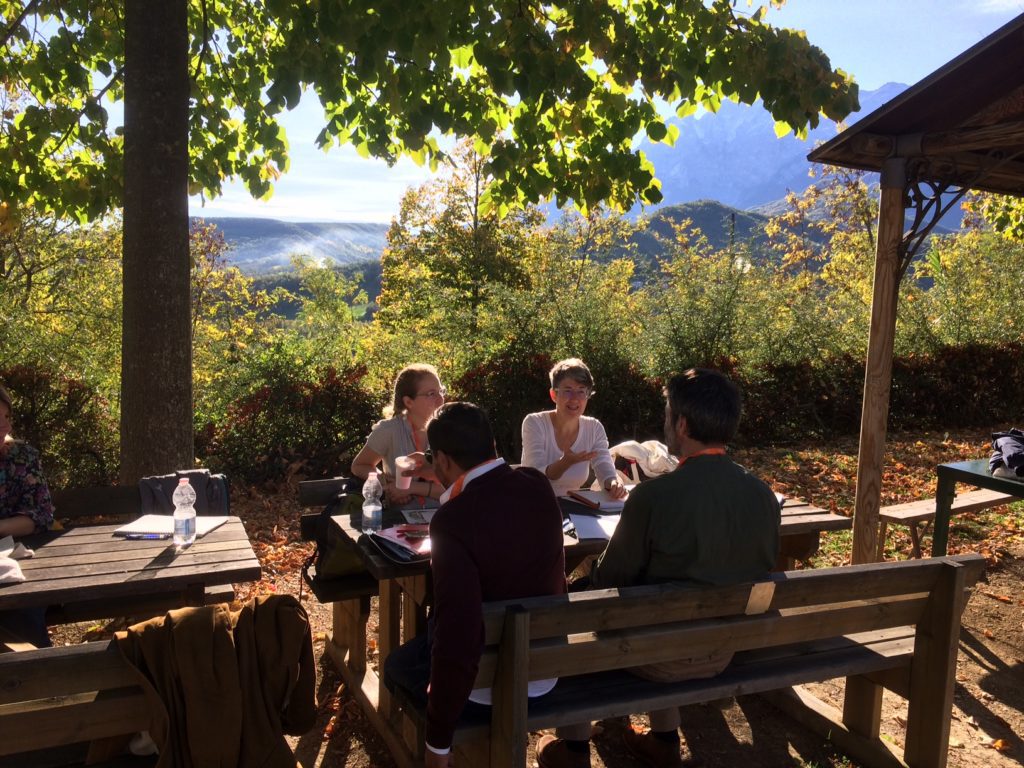
When you work in your territory, you feel drowned in your problems…And here you discover that many other Parks are facing the same challenges, in different territories. You discover new ways of working and leave with a lot of energy and new ideas to implement in your Park. Its a breath of fresh air.
Federico Armas Fuertes, from Garojonay National Park, La Gomera, Canary Islands (Spain), a participant at the X Charter Network Meeting.
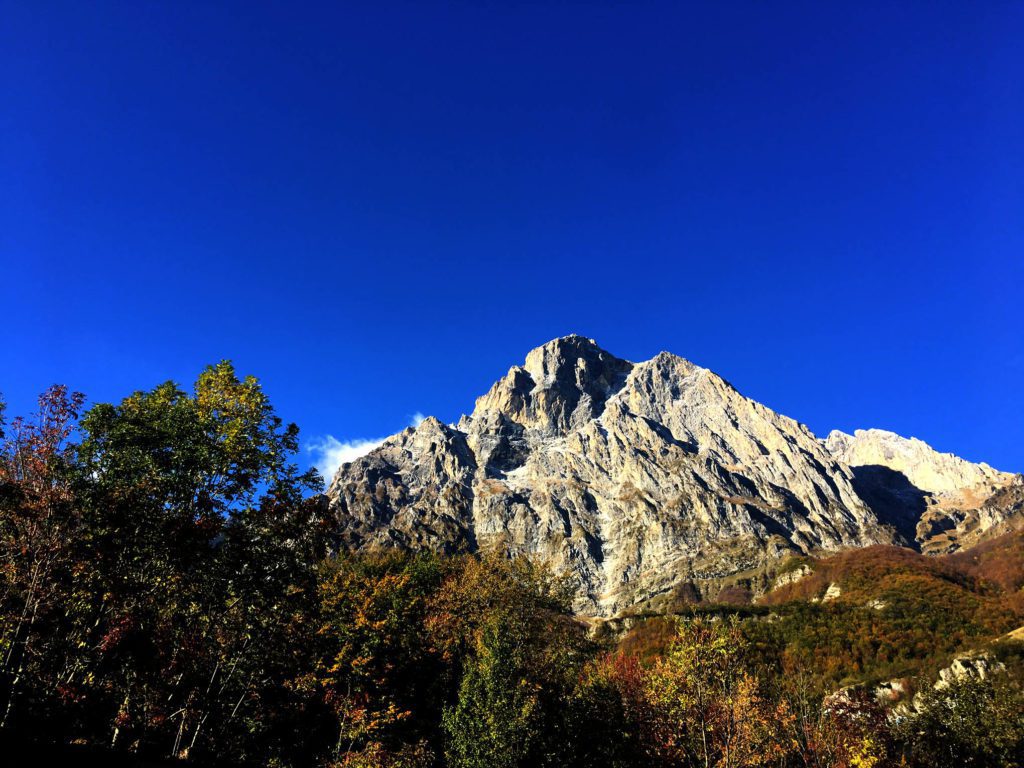
EUROPARC Federation thanks to the Monastery of San Gabriel, in Isola del Gran Sasso d’Italia, for having hosted the meeting and the participants. Thank you also to Federparchi – EUROPARC Italy and to Gran Sasso e Monti della Laga National Park, for having organised all the logistics of the event.
